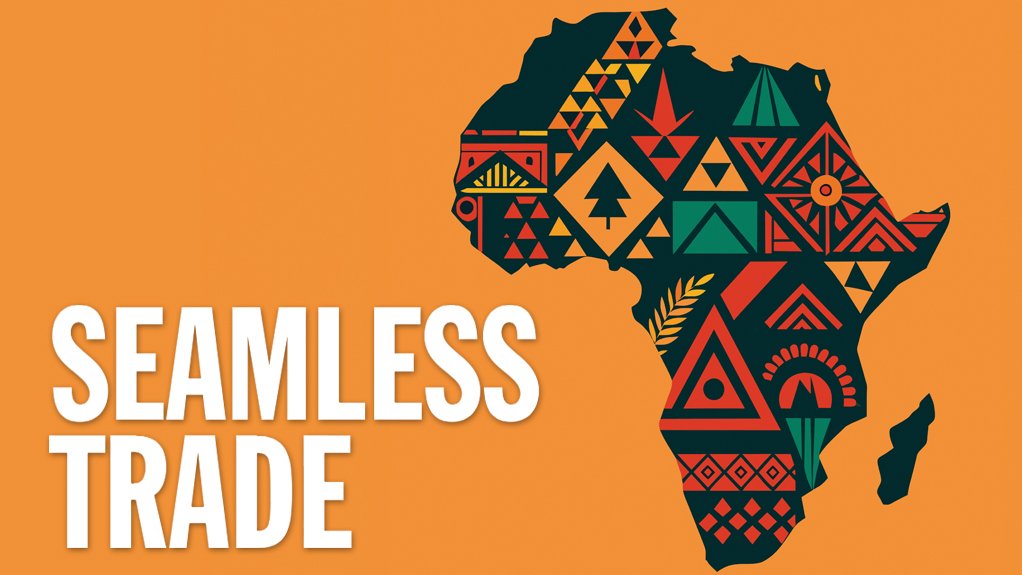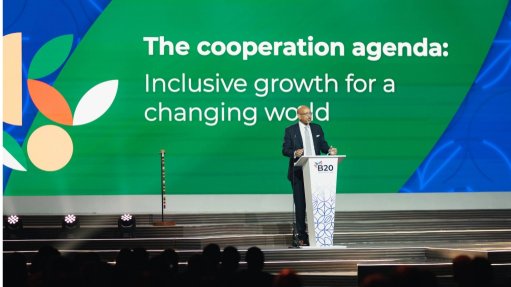Despite big obstacles, AfCFTA viewed as key to weaving new trade and industrial tapestry
In the grand tapestry of international commerce, Africa’s 55 nations have stood as individual threads rather than a unified fabric of economic opportunity. But a new era of collaboration being ushered in by the African Continental Free Trade Area (AfCFTA) Agreement promises to harness the continent’s vast potential and foster economic prosperity for its people.
Launched in 2021, this African Union (AU) treaty aims to integrate the country’s economies through facilitating the easy, cheap flow of goods and services. Coupled with complementary measures such as the adoption of open visa policies, this will create a megamarket of 1.3-billion people, which, according to United Nations (UN) projections, will increase to about 2.5-billion people by 2050, with a corresponding surge in business and consumer spending from close to $3-trillion currently to about $16.12-trillion.
Considering the additional benefits of increased foreign direct investment by global corporations eyeing this colossal market, the World Bank foresees the AfCFTA lifting 50-million Africans out of poverty, elevating overall incomes by 8% and boosting intra-African and international exports by 109% and 32% respectively by 2035.
To protect their domestic markets, African countries have often erected trade barriers against imports, including those emanating from the continent. This has resulted in limited intra-African trade, with the AU estimating that exporting commodities to overseas markets is 6.1% cheaper than exporting to countries within the continent.
Illustrating how protectionism – coupled with other factors – has skewed African trade in favour of overseas-bound shipments, Harvard University research associate and former African Import-Export Bank chief economist and research and international cooperation director Hippolyte Fofack writes in a recent commentary that goods traded within the continent constitute a dismal 15% of total African trade. In contrast, 60% of internationally traded goods in Asia are destined for countries within that continent, while Europe boasts an even higher proportion of 70%. Globally, Africa accounts for a mere 3% of total trade.
Because of Africa’s round-tripping economic reality, which started in colonial times and involves the export of natural resources and other raw materials and the import of value-added manufactured products at higher prices, a significant proportion of African goods shipped overseas continues to be unprocessed commodities. This model has endured to this day, even as increasing trade volumes now flow eastwards, unlike in the past, when Europe was by far the primary destination.
By eliminating tariff protection on goods traded on the African continent, the AfCFTA promises to not only boost trade among the continent’s countries but also drive industrialisation. “This is because manufactured goods dominate intra-African trade,” says Fofack, echoing UN Economic Commission for Africa (ECA) statistics, which show that 40% of intra-African exports between 2017 and 2022 comprised manufactured goods.
Fofack explains that the competitiveness and productivity gains associated with economies of scale under the AfCFTA should entice global corporations to establish Africa-based enterprises that convert the continent’s natural resources into manufactured products.
He therefore envisages lithium-rich countries such as the Democratic Republic of Congo and Zambia moving beyond merely exporting the mineral, instead integrating into the global value chains of new-energy vehicles as manufacturers and exporters of lithium batteries.
Additionally, within the automotive industry – which has been identified as a high-potential sector alongside agriculture and agro- processing, pharmaceuticals, and transport and logistics – West African countries such as Liberia and Côte d’Ivoire are seen transitioning from solely supplying natural rubber to becoming global hubs for tyre manufacturing.
“The future of African trade in the AfCFTA era is one in which commodity-based industrialisation will become the continent’s modus operandi to foster vertical integration,” says Fofack.
The Journey So Far
One of the flagship initiatives of the AU’s Agenda 2063 – the continental body’s strategic framework for socioeconomic transformation over the next few decades – the AfCFTA Agreement started taking shape in 2018, when it was signed by 18 African heads of State in the Rwandan capital of Kigali. Fast-forward to today: all the continent’s 55 nations except Eritrea have joined.
The treaty has also been ratified by 47 nations, which collectively represent 95% of the continent’s GDP, as well as 91% of its population and 96% of intra-African trade.
The AfCFTA officially became operational in January 2021. Progress was impeded for several months thereafter, however, as Covid-19-induced lockdowns lingered in many countries.
Implementation of the treaty took a significant step forward in October 2022 with the launch of a pilot programme called the AfCFTA Guided Trade Initiative. Cameroon, Egypt, Ghana, Kenya, Mauritius, Rwanda, Tanzania and Tunisia were selected to participate in this programme because they had met the minimum requirements, including the deployment of the AfCFTA e-tariff book and rules of origin manual.
In total, more than 90 products were approved for inclusion in the pilot programme. In late 2022, Kenya made its debut in the initiative by exporting batteries and tea to Ghana, the host of the AfCFTA secretariat, while at about the same time Rwanda shipped coffee products to the West African country.
South Africa joined the Guided Trade Initiative pilot programme in January, when it made its first shipment of ‘Made in South Africa’ products under AfCFTA rules.
The Guided Trade Initiative is expected to expand to 31 of the 47 countries that have ratified the AfCFTA agreement by year-end.
Under the AfCFTA Agreement, half of the AU’s member States have a deadline of 2031 to finalise the submission of their tariff offers on a minimum of 90% of their imports. However, 46 countries have already submitted their initial tariff offers to the AfCFTA secretariat, South African Institute of International Affairs senior economist Dr Joseph Matola tells Engineering News & Mining Weekly.
“At least 36 – or 78% – of the offers have been certified to have met the minimum threshold requirement of 90%, while others are still undergoing verification,” he says.
The Road Ahead
The path towards increased intra-African trade and greater economic prosperity faces numerous hurdles, however. Melaku Desta, coordinator of the ECA’s African Trade Policy Centre, highlights non-tariff barriers as one such obstacle. “Non-tariff barriers cover a wide range of policies, regulations and administrative practices, and examples would include discretionary import licensing procedures, technical and health-related standards and quantitative restrictions, which can include outright bans against the importation of products from particular countries,” he says in a written response to Engineering News & Mining Weekly.
Recognising the challenges posed by non-tariff barriers, the AfCFTA has established an online mechanism where such infractions can be reported in real time. The reports are promptly forwarded to nominated focal points in the countries against which the complaints are lodged. While usage of this mechanism is still limited, Desta expects an improvement as preferential trade flows under the AfCFTA Agreement increase.
Commentators have also flagged uneven development and income levels among African countries as a potential hurdle that the AfCFTA must navigate. While agreeing, Matola stresses that this is not peculiar to Africa, arguing that one way of addressing this is ensuring that the continental treaty works for everyone and does not leave some countries worse off. He says that the phased approach to tariff offers, which initially targets 90% of goods, is in part designed to achjeve this by giving countries ample time to prepare their sensitive industries for free trading.
While regional economic communities are fundamental to the success of the AfCFTA, with the intention being to leverage these blocs’ achievements in trade integration and the lessons they have learnt to improve the implementation of the AfCFTA, Matola laments that the blocs, including the Southern African Development Community, have been slow in achieving their integration targets. He also decries the partial disintegration of the West African bloc, the Economic Community of West African States, following the announcement in January by Burkina Faso, Mali and Niger that they were withdrawing their membership. “This is concerning, as it shows the delicate nature of free trade areas in the African region,” he says.
Security threats in hotspots such as West Africa, northern Mozambique and elsewhere represent a potential double whammy. On the one hand, attacks on cargo, infrastructure and people lead to diminished cross-border cargo and people movement, says Matola. On the other, the security issues are arising at a time when countries have not been forthcoming enough to start trading under the AfCFTA Agreement, despite trade having officially started in 2021. “Like with the Covid-19 pandemic, these security issues provide more reasons for countries to further delay starting to trade under the AfCFTA Agreement,” he says.
Africa’s yawning infrastructure gaps in the road, rail and ports sectors, as well as in information and communication technology (ICT), has also been identified as a potential hurdle to the full implementation of the AfCFTA treaty in the near term. “If Africa’s transport and ICT infrastructure remains underdeveloped, the AfCFTA will not reach its full potential,” says Matola.
The AU is alive to this challenge, however, and has adopted the Accelerated Industrial Development of Africa initiative and the Programme for Infrastructure Development in Africa to address the inadequacies.
Then there is the question of small businesses’ participation, with Matola arguing that the AFCFTA has to serve small businesses for it to be successful. He elucidates: “This is because small and medium-sized enterprises (SMEs) are crucial for African economies. Unfortunately, although most African governments are actively promoting SMEs in their countries, the business landscape in these countries is still not conducive for SMEs to thrive.
“Many countries still have business regulations that constrain SMEs and prevent many from formal registration. Bad tax policies and lack of fiscal incentives also hinder SMEs. Unconducive monetary conditions such as high interest rates, volatile exchange rates and high inflation also make financing and investing in SMEs difficult.”
Moreover, the delay in introducing open visa policies has been decried by many frustrated stakeholders as a hurdle to Africa’s integration through trade. The latest to add his voice is Nigerian Aliko Dangote, Africa’s richest citizen, who said at this year’s Africa CEO Forum, held in Rwanda last month: “I complained to President Paul Kagame. I told him that, as an investor, I have to now apply for 35 different visas on my passport, and I told him, ‘Mr President, I really don’t have the time to go and be dropping off my passport at embassies to get a visa.’”
According to the Visa Openness Index, which measures the extent to which African countries are open to visitors from other African countries, only four countries – Benin, Rwanda, Seychelles and the Gambia – had eliminated all visa requirements for African travellers by the end of last year.
Meanwhile, Fofack says there is also a need to resist the rush to bilateral deals – which often lead to trade deflection and potentially weaken the continent’s voice on the global stage – if the implementation of the AfCFTA treaty is to proceed apace.
“Speaking with one voice will be extremely important to strengthen Africa’s bargaining power in international trade negotiations and shift the boundary of fair trade to a more inclusive process of globalisation,” says Fofack.
“Speaking with one voice will also enhance the development of the robust regional value chains needed to effectively implement the commodity-based industrialisation model that transcends the extremely costly and sticky colonial development paradigms of resource extraction.”
Uncertainties in the global economy might also affect the implementation of the AfCFTA treaty. But the ECA’s Desta argues that a successful AfCFTA can, over time, help cushion African countries from global shocks. “The impact of global economic uncertainties must not be exaggerated,” he tells Engineering News & Mining Weekly. “After all, Africa is not an island.”
The ECA has been actively supporting the implementation of the AfCFTA treaty through various initiatives. These include aiding African States in developing national and regional AfCFTA implementation strategies and capacity-building programmes, as well as supporting the African private sector – particularly women- and youth-owned businesses – to understand and seize the opportunities presented by the burgeoning free trade area.
Desta elucidates: “Over the past four years, 35 African countries and four regional economic communities have developed and launched their national and regional AfCFTA implementation strategies with ECA support, while several others are at different stages in the strategy development process.
“The ECA is also championing the development of AfCFTA-anchored regional value chains in critical sectors, including pharmaceuticals and electric vehicle batteries.”
The AfCFTA indeed has the potential to be the transformative stitch that will weave Africa’s disparate economies into one fabric, delivering substantial economic growth, industrial advancement and global relevance.
Article Enquiry
Email Article
Save Article
Feedback
To advertise email advertising@creamermedia.co.za or click here
Comments
Press Office
Announcements
What's On
Subscribe to improve your user experience...
Option 1 (equivalent of R125 a month):
Receive a weekly copy of Creamer Media's Engineering News & Mining Weekly magazine
(print copy for those in South Africa and e-magazine for those outside of South Africa)
Receive daily email newsletters
Access to full search results
Access archive of magazine back copies
Access to Projects in Progress
Access to ONE Research Report of your choice in PDF format
Option 2 (equivalent of R375 a month):
All benefits from Option 1
PLUS
Access to Creamer Media's Research Channel Africa for ALL Research Reports, in PDF format, on various industrial and mining sectors
including Electricity; Water; Energy Transition; Hydrogen; Roads, Rail and Ports; Coal; Gold; Platinum; Battery Metals; etc.
Already a subscriber?
Forgotten your password?
Receive weekly copy of Creamer Media's Engineering News & Mining Weekly magazine (print copy for those in South Africa and e-magazine for those outside of South Africa)
➕
Recieve daily email newsletters
➕
Access to full search results
➕
Access archive of magazine back copies
➕
Access to Projects in Progress
➕
Access to ONE Research Report of your choice in PDF format
RESEARCH CHANNEL AFRICA
R4500 (equivalent of R375 a month)
SUBSCRIBEAll benefits from Option 1
➕
Access to Creamer Media's Research Channel Africa for ALL Research Reports on various industrial and mining sectors, in PDF format, including on:
Electricity
➕
Water
➕
Energy Transition
➕
Hydrogen
➕
Roads, Rail and Ports
➕
Coal
➕
Gold
➕
Platinum
➕
Battery Metals
➕
etc.
Receive all benefits from Option 1 or Option 2 delivered to numerous people at your company
➕
Multiple User names and Passwords for simultaneous log-ins
➕
Intranet integration access to all in your organisation





















